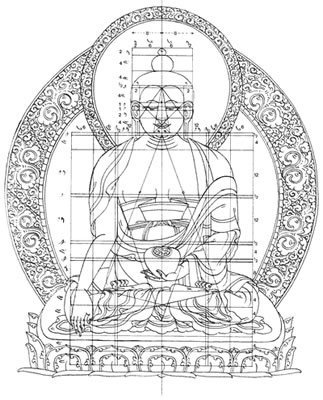Exploring art from multiple perspectives is one of the great joys of museum educators. Learning to see in new ways keeps us engaged, fresh, and curious. As many of us have discovered, often its the museum visitor who teaches us how to see in new ways. But learning to see isnt just about seeing something new; it also can be about learning to see how the old can inform the new and vice versa.
A case in point: while walking through our galleries one afternoon, I discovered a young woman making a drawing of a bronze sculpture of Mooshika, the beloved mouse companion of Ganesha, the elephant-headed Hindu deity. The woman, who was sitting comfortably on the floor, had set out her supplies, including a large pad of drawing paper, a pencil, and a nifty drawing device: a small frame holding a grid of squares printed on a clear plastic sheet. When the woman lifted and held the device at arms length, the framed grid narrowed her field of vision, allowing her to gauge the contour, size, and proportions of Mooshikas long, lean body. Working methodically, she would raise and lower her arm, and then make marks on her paper, creating a lovely drawing with a confident hand.
Kneeling down behind her quietly and seeing the world through the artists framed grid brought to mind the grid Tibetan Buddhist painters inscribe on their thankgas (flat paintings). The grids follow traditional canons of measurement, allowing artists to create Buddhas, bodhisattvas and deities with perfect proportions. For centuries these perfectly proportioned figures have reflected the beauty of divine realms accessed by the faithful through elaborate visualization practices.
Whether recreating a meditative Buddha to conform to the wishes of a patron in 14th century Tibet or drawing a bronze mouse as part of a college art assignment in 21st century New York City, the framed grid offers clarity and insight for those who turn to its simple and elegant structure, bringing to mind the old adage, What is eternal is always contemporary






One Response to Timeless Tools